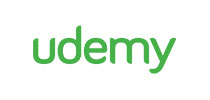1. What well cover in this section
2.1 webapp.zip
2. Setting up an api with our existing code base
3.1 webapp.zip
3. Adding stub handlers (endpoints) for our API
4.1 utilities.go.zip
4.2 webapp.zip
4. Trying out our REST API to make sure things work
5.1 webapp.zip
5. Getting started with JWT Authentication
6.1 webapp.zip
6. Generating token pairs
7.1 webapp.zip
7. Implementing the authenticate handler
8.1 curl-command.txt.zip
8. Trying out the authentication handler
9.1 webapp.zip
9. Testing our authentication handler
10.1 main.go.zip
10.2 webapp.zip
10. Setting up a simple program to generate tokens for testing
11.1 webapp.zip
11. Testing generating and validating tokens
12.1 webapp.zip
12. Setting up our application middleware
13.1 webapp.zip
13. Testing our CORS middleware
14.1 webapp.zip
14. Testing our authRequired middleware
15.1 webapp.zip
15. Add middleware to routes
16.1 webapp.zip
16. Testing API routes
17.1 webapp.zip
17. Implementing the handler to refresh tokens
18.1 webapp.zip
18. Testing refreshing tokens
19.1 webapp.zip
19. Completing the handlers that interact with the User type
20.1 webapp.zip
20. Testing the handlers that interact with the User type
21.1 webapp.zip
21. Finishing up testing handlers that interact with the data.User type

